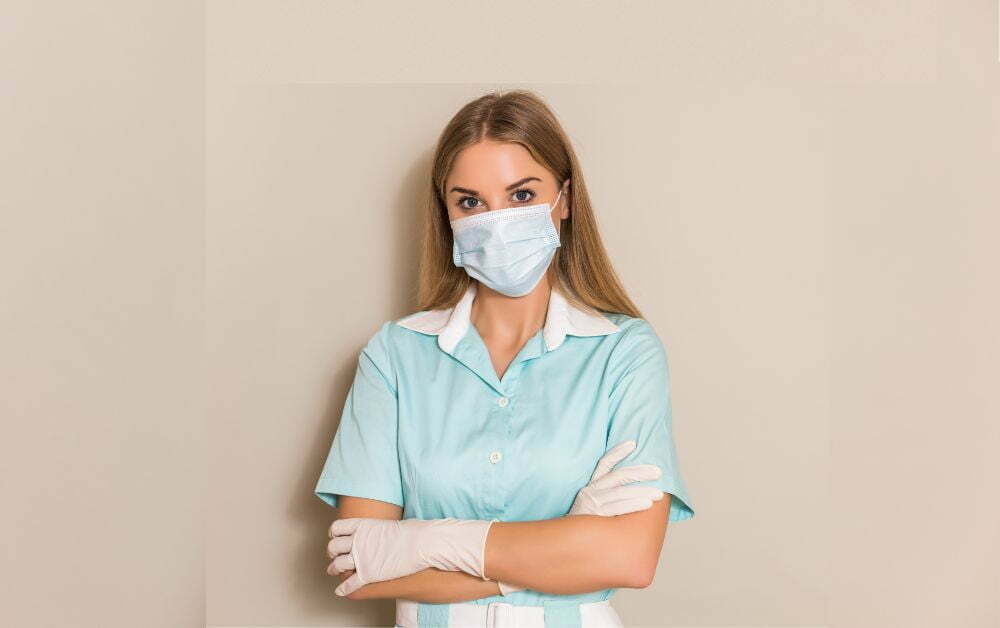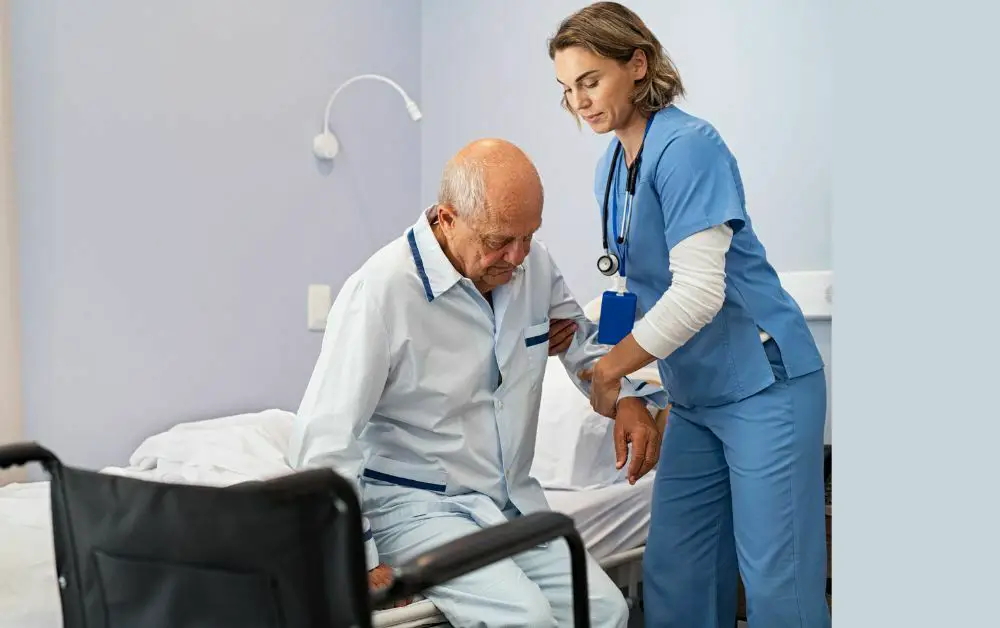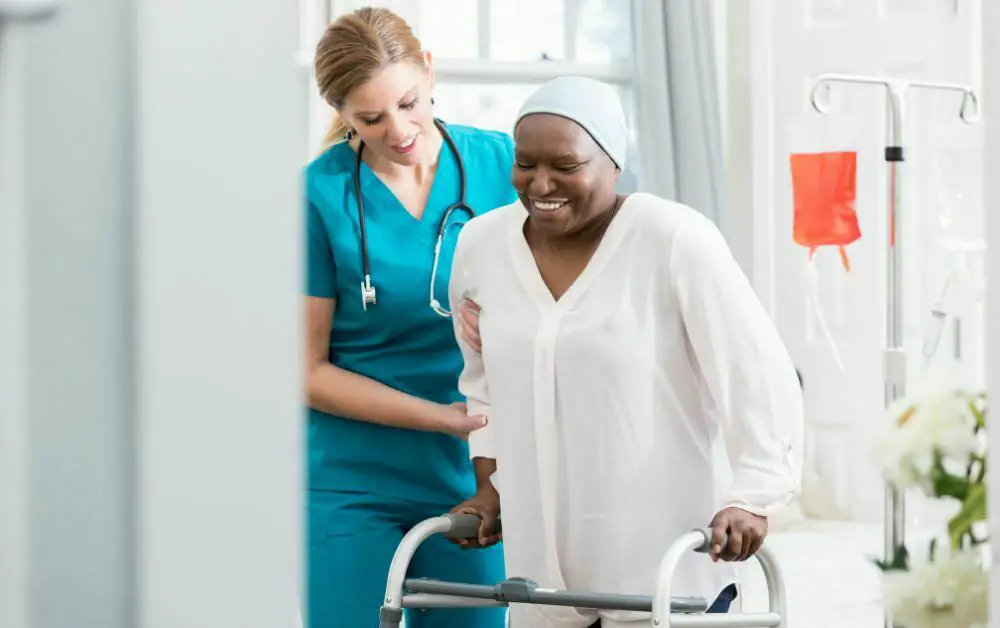Welcome to the NCLEX-RN practice test for safety and infection control. In this practice test, you will learn about common infections and their signs and symptoms, how to prevent them, and how to keep clients safe from them. Common infections can cause dangerous medical conditions that can threaten lives. Be prepared by studying the infection control content in this practice test! These are some of the most important topics on the exam and include the following:
- Infections of the skin and mucous membranes
- Respiratory tract infections
- Urinary tract infections
- Blood stream infections
- Infections of the gastrointestinal tract
- Infections associated with indwelling catheters and other devices
- Infections associated with diabetes mellitus and its complications
- Vaccinations to prevent infectious diseases
- Hand hygiene
- Preventing the spread of communicable diseases
- Client education and safety measures
Each question is a multiple choice question with four answer options. Click next to move to the next question. You can try to take the test again or you can review the answers to the missed items. Good luck!
Quiz Summary
0 of 40 Questions completed
Questions:
Information
You have already completed the quiz before. Hence you can not start it again.
Quiz is loading…
You must sign in or sign up to start the quiz.
You must first complete the following:
Results
Results
0 of 40 Questions answered correctly
Your time:
Time has elapsed
You have reached 0 of 0 point(s), (0)
Earned Point(s): 0 of 0, (0)
0 Essay(s) Pending (Possible Point(s): 0)
| Average score |
|
| Your score |
|
Categories
- Safety and Infection Control 0%
- 1
- 2
- 3
- 4
- 5
- 6
- 7
- 8
- 9
- 10
- 11
- 12
- 13
- 14
- 15
- 16
- 17
- 18
- 19
- 20
- 21
- 22
- 23
- 24
- 25
- 26
- 27
- 28
- 29
- 30
- 31
- 32
- 33
- 34
- 35
- 36
- 37
- 38
- 39
- 40
- Current
- Review
- Answered
- Correct
- Incorrect
-
Question 1 of 40
1. Question
Which nursing intervention is most appropriate to reduce environmental stimuli that may cause discomfort for a client?
CorrectIncorrect -
Question 2 of 40
2. Question
A nurse is assisting a client with shampooing his hair while he is still in bed. While helping the client, the nurse raises the bed to approximately the level of her waist. What is the rationale for this action?
CorrectIncorrect -
Question 3 of 40
3. Question
A patient triaged as class IV in a mass casualty emergency situation means that the patient:
CorrectIncorrect -
Question 4 of 40
4. Question
You see a patient lying on the floor of the bathroom. You are NOT assigned to this patient. What is the first thing that you should do?
CorrectIncorrect -
Question 5 of 40
5. Question
You are ready to give your resident a complete bed bath. The temperature of this bath water should be which of the following?
CorrectIncorrect -
Question 6 of 40
6. Question
The nurse should wash from the ___________ when washing a patient’s eye area.
CorrectIncorrect -
Question 7 of 40
7. Question
Your patient had a stroke, or CVA, five years ago. The resident still has right sided weakness. You are ready to transfer the resident from the bed to the wheelchair. The wheelchair should be positioned at the ______________.
CorrectIncorrect -
Question 8 of 40
8. Question
You are getting the patient ready to eat. The patient is on complete bed rest. You will put the head of the bed up at ____________ degrees or more.
CorrectIncorrect -
Question 9 of 40
9. Question
Your patient has shortness of breath. You should position the patient in the ________ position.
CorrectIncorrect -
Question 10 of 40
10. Question
The Sims’ position is MOST similar to the ____________ position.
CorrectIncorrect -
Question 11 of 40
11. Question
You take an adult’s blood pressure and it is 40/20. You place the patient in a Trendelenberg position before rechecking the blood pressure. You will __________ to put the patient into the Trendelenberg position.
CorrectIncorrect -
Question 12 of 40
12. Question
A nurse realizes after a patient has left the office that she forgot to put the patient’s complaint of a sore throat. Which of the following choices would BEST correct her error?
CorrectIncorrect -
Question 13 of 40
13. Question
Which of the following vital signs can be expected in a child that is a febrile?
CorrectIncorrect -
Question 14 of 40
14. Question
A patient is having difficulty understanding how to properly run her glucose meter. Which of the following teaching methods would best help the patient understand how to use her instrument correctly?
CorrectIncorrect -
Question 15 of 40
15. Question
When teaching a patient to use the three point gait technique of crutch use:
CorrectIncorrect -
Question 16 of 40
16. Question
A nurse enters a client’s room and finds her lying on the floor near the bathroom door. As the nurse provides assistance, the client states, “I thought I could get up on my own.” What information must the nurse document in this situation?
CorrectIncorrect -
Question 17 of 40
17. Question
A nurse is performing an end-of-shift count of narcotics kept in the locked cabinet. The narcotic log states there should be 26 oxycodone pills left, but there are only 24 in the drawer. What is the first action of the nurse?
CorrectIncorrect -
Question 18 of 40
18. Question
Which of the following is an example of whistle blowing?
CorrectIncorrect -
Question 19 of 40
19. Question
A teacher brings a 5-year old child to the school nurse because of a bruise under her eye. When asked about the bruise, the child responds, “my daddy did it.” What is the nurse’s initial action in this situation?
CorrectIncorrect -
Question 20 of 40
20. Question
Which of the following accurately reflects the order of discharge/relocation under the criteria for discharge/relocation of patients?
CorrectIncorrect -
Question 21 of 40
21. Question
OSHA has very strict standards for hospital employees who may encounter hazardous materials or patients who have been exposed to them. These regulations include all of the following EXCEPT:
CorrectIncorrect -
Question 22 of 40
22. Question
Which of the following screening tools have been found to have a high diagnostic accuracy for screening for intimate partner violence?
CorrectIncorrect -
Question 23 of 40
23. Question
A family member is complaining that the lights are too dim in the middle of the night when she comes in to visit her husbanD. What is the most objective response?
CorrectIncorrect -
Question 24 of 40
24. Question
What is a key principle of patient teaching that must take place to ensure patient safety?
CorrectIncorrect -
Question 25 of 40
25. Question
A nurse is assessing a client’s pulse oximetry on the surgical unit. As part of routine interventions, the nurse turns off the exam light over the client’s bed. Which of the following best describes the rationale for this intervention?
CorrectIncorrect -
Question 26 of 40
26. Question
Which of the following conditions increases a client’s risk of aspiration of stomach contents?
CorrectIncorrect -
Question 27 of 40
27. Question
Hepatitis C virus (HCV) can be spread through hugging, sneezing, coughing, sharing eating utensils and other forms of casual contact.
CorrectIncorrect -
Question 28 of 40
28. Question
The primary route of transmission of MRSA is via:
CorrectIncorrect -
Question 29 of 40
29. Question
You will be escorting a patient to the operating room on a stretcher. In order to prevent this patient from falling, you must do which of the following?
CorrectIncorrect -
Question 30 of 40
30. Question
All hospitals and nursing homes are mandated to have the goal of a restraint free environment. The best way to achieve this goal is to ________.
CorrectIncorrect -
Question 31 of 40
31. Question
Which of these devices is considered a protective device, rather than a restraint?
CorrectIncorrect -
Question 32 of 40
32. Question
Restraints are sometimes used for what patient conditions or situations?
CorrectIncorrect -
Question 33 of 40
33. Question
The chain of infection includes the _______________.
CorrectIncorrect -
Question 34 of 40
34. Question
Asepsis is defined as _____________.
CorrectIncorrect -
Question 35 of 40
35. Question
Mary T. was admitted to a nursing home on May 1st. On July 4th, she was diagnosed with a skin infection. This infection is considered a __________________ infection.
CorrectIncorrect -
Question 36 of 40
36. Question
Alzheimer’s disease patients wander. The dangers associated with this wandering can be prevented with which of the following?
CorrectIncorrect -
Question 37 of 40
37. Question
Mr. S has just been diagnosed with active tuberculosis. Which of the following nursing interventions should the nurse perform to prevent transmission to others?
CorrectIncorrect -
Question 38 of 40
38. Question
Which of the following is an example of client handling equipment?
CorrectIncorrect -
Question 39 of 40
39. Question
Which practice will help to reduce the risk of a needlestick injury?
CorrectIncorrect -
Question 40 of 40
40. Question
Which of the following actions can a nurse do to prevent a fire from occurring in the area where he works?
CorrectIncorrect







